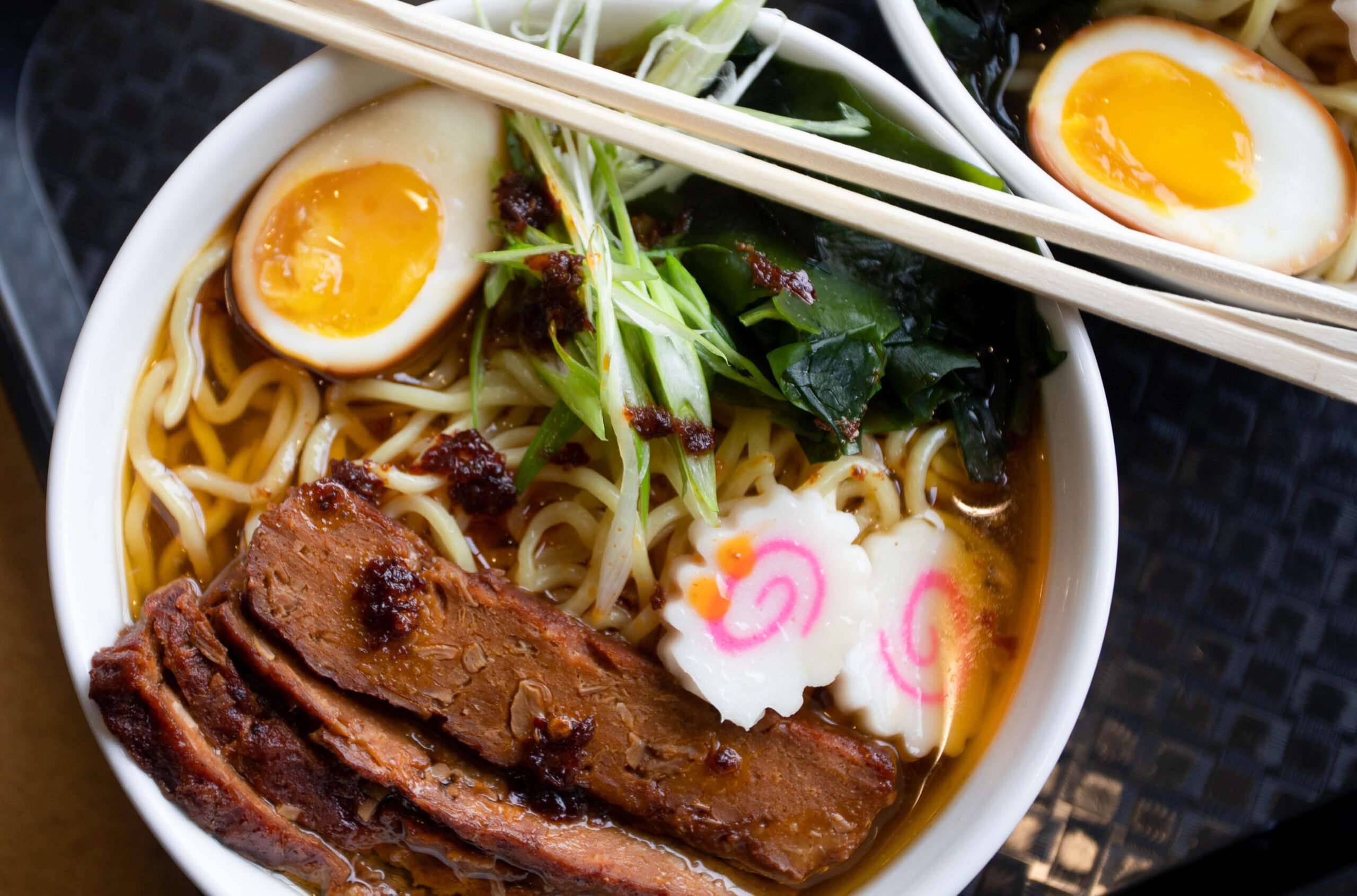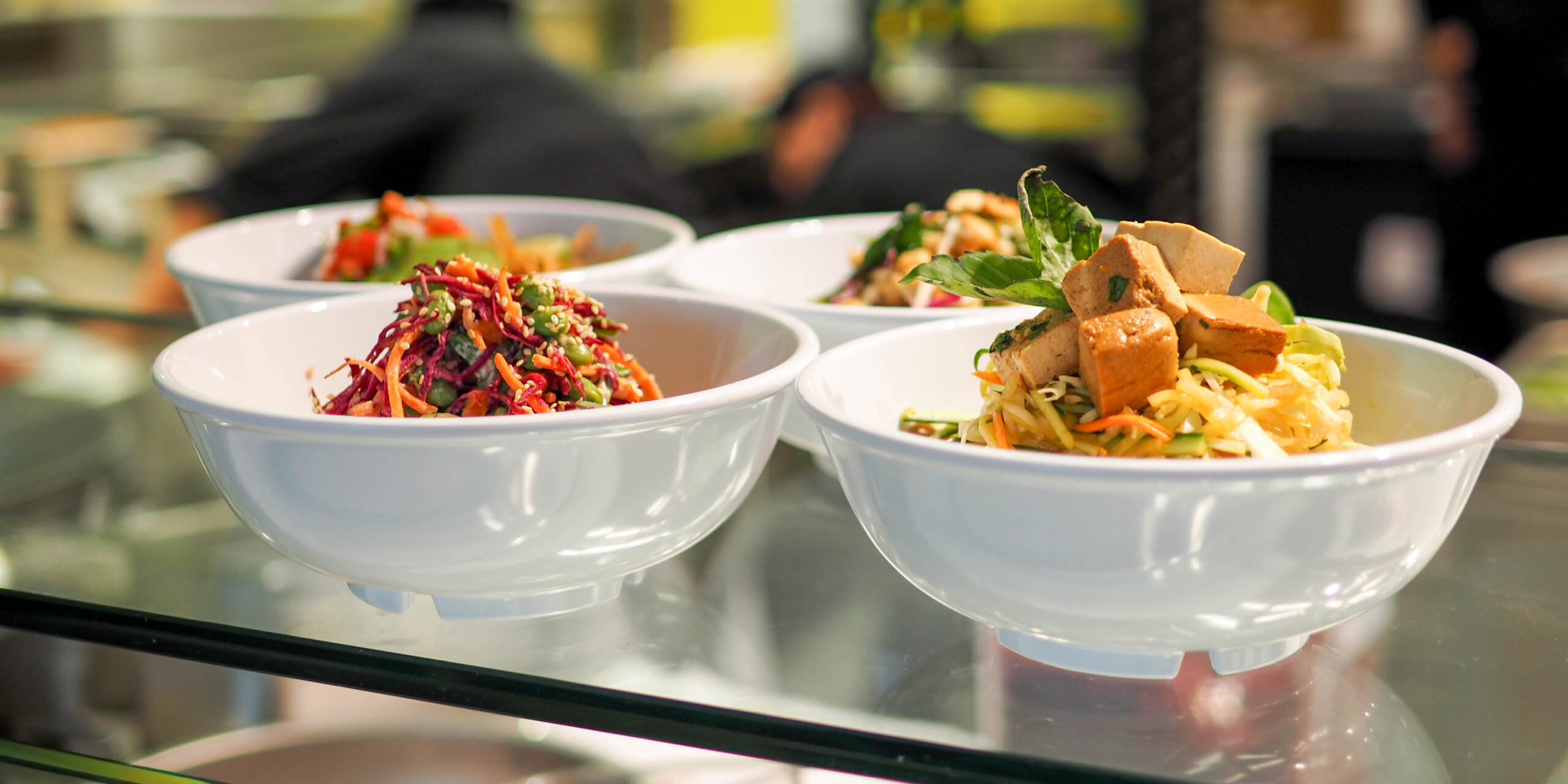How healthy is university food in Canada?
Menus are changing with an eye to public health, cultural diversity and sustainable development.

Until recently, breaded chicken strips and fries were standard fare at university cafeterias. Though such deep-fried fodder remains available, healthier options are becoming more widespread. As scientific studies highlight the harmful health effects of ultra-processed foods, awareness is growing about the benefits of a diet rich in vegetables, plant-based proteins, white meat, fish and whole grains. Young people are increasingly choosing to eat fewer animal products or to cut them out altogether, guided by their cultural or religious beliefs or their concern about the carbon footprint of raising animals for food. Students who crave a bowl of brown rice with grilled tofu and mixed vegetables, topped with green-onion-and-ginger sauce, might now be able to find it at a select Canadian university.
Eleven years ago, the Vancouver campus of the University of British Columbia (UBC) launched a food revolution. Campus food services developed a new vision of using fresh ingredients to provide healthy, delicious, inspiring, socially responsible and environmentally conscious meals. Ultra-processed foods zapped in the microwave were replaced with fresh meals made on site.
“We had to hire a culinary team and a number of chefs to lead this revolution,” notes David Speight, executive chef and culinary director at UBC Vancouver.
A full-time dietitian collaborated with the chefs to establish guidelines inspired by the university’s institutional values, Canada’s Food Guide and Menus of Change (an initiative of the Culinary Institute of America and Harvard University).
At UBC, a typical plate consists of half fruits and/or vegetables, one-quarter protein, and one-quarter whole grains or high-fibre carbohydrates. Unsweetened milk, yogurt, and fortified plant-based beverages are available. Each service location offers daily vegetarian and vegan options.
Dietitians drive change
Other institutions are following suit. Ontario’s University of Guelph (U of Guelph) has kept a dietitian on staff for the last two years. After participating in several training programs, its food services team now offers a menu featuring 50 per cent plant-based proteins.

“We have nearly 50 chefs and cooks from 12 ethnic backgrounds who infuse a tremendous amount of taste and flavour into our plant-based protein dishes,” says Vijay Nair, assistant director of culinary operations at U of Guelph. Nutrition students also promote healthy eating habits by offering nutrition education and peer support through the Student Nutrition Awareness Program (SNAP).
In Ottawa, Carleton University’s dietitian helps plan menus and holds free consultations for any student on a meal plan. The cafeteria has 15 stations offering a variety of options. The EatWell logo helps students identify healthy choices.
“We are the main source of food for our 4,000 or so residents,” reasons Chad McKenzie, director of campus services at Carleton. “So it’s important to offer nutritious options.”
What concrete contributions do dietitians make to university food services? “We can calculate the nutritional value of each meal,” explains Carol-Ann Robert, nutritionist-dietitian with Team Nutrition. “If it’s low in fibre, for example, we can recommend adding a vegetable to the recipe or changing out one ingredient for another. We also make sure that the menu is varied.”
A transformation underway
Although most Canadian university food services do not yet have a dietitian on staff, and many still offer a preponderance of fried foods and sandwiches on white bread, several institutions have begun transitioning to healthier options.
Université de Moncton, for example, offers vegetarian fare, sourcing its vegetables from a local producer. “Many of our students come from Morocco, Tunisia, Algeria, and Senegal,” notes Marc Surette, food services manager at Université de Moncton. “These are countries where people eat a lot of chickpeas and lentils, so we serve those on our menus.”
Eight years ago, Université de Montréal (UdeM), launched an initiative to offer a wider variety of dishes. Its menu includes vegetarian and vegan cuisine, and fish is served up once a week. It also prioritizes local sourcing — for example, buying Arctic char raised in a Montreal-based intensive water recirculation system.
“Local sourcing is more expensive,” notes UdeM spokesperson Geneviève O’Meara, “but, on the flip side, plant-based proteins are not very expensive.”
The University of Saskatchewan is also bringing about change. “We now provide several plant-based options and want to offer even more,” says James McFarland, culinary services assistant director and executive chef. “We also occasionally have food like burgers on the menu, but we’re trying to educate students by providing nutritious alternatives, like our healthy bowls.”
Setting an example
Ms. Robert feels that university food services can do more than just nourish: they can also provide an education. “The idea is not to strive for perfection, but to create an environment that encourages better habits,” she says.
She notes that some foods should be eaten daily, others occasionally, and others only rarely. In her view, a university should reflect this idea: “We don’t want to ban guilty pleasures, we just want to make healthier choices the norm.”
Featured Jobs
- Veterinary Medicine - Faculty Position (Large Animal Internal Medicine) University of Saskatchewan
- Canada Excellence Research Chair in Energy TransitionsUniversité du Québec à Trois-Rivières (UQTR)
- Business – Lecturer or Assistant Professor, 2-year term (Strategic Management) McMaster University
- Canada Excellence Research Chair in Forest Biodiversity Conservation (Full Professor)University of New Brunswick
- Psychology - Assistant Professor (Speech-Language Pathology)University of Victoria










Post a comment
University Affairs moderates all comments according to the following guidelines. If approved, comments generally appear within one business day. We may republish particularly insightful remarks in our print edition or elsewhere.